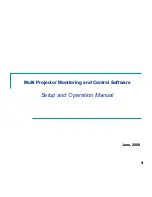
IP Multicast Commands
ExtremeWare XOS 11.5 supports only the Summit X450 family of switches and the BlackDiamond 8800 series switch.
ExtremeWare XOS 11.5 Command Reference Guide
1786
PIM Sparse Mode (PIM-SM)
Unlike PIM-DM, PIM-SM is an explicit join and prune protocol, and it supports shared trees as well as
shortest path trees (SPTs). The routers must explicitly join the group(s) in which they are interested in
becoming a member, which is beneficial for large networks that have group members who are sparsely
distributed.
Using PIM-SM, the router sends a join message to the rendezvous point (RP). The RP is a central
multicast router that is responsible for receiving and distributing multicast packets. By default, the RP is
selected dynamically (but not automatically). You can also define a static RP in your network, using the
following command:
configure pim crp static <ip_address>
When a router has a multicast packet to distribute, it encapsulates the packet in a unicast message and
sends it to the RP. The RP decapsulates the multicast packet and distributes it among all member
routers.
When a router determines that the multicast rate from a particular group has exceeded a configured
threshold, that router can send an explicit join to the originating router. When this occurs, the receiving
router gets the multicast directly from the sending router, and bypasses the RP.
NOTE
You can run either PIM-DM or PIM-SM per VLAN.
PIM-SSM
PIM-SM works well in many-to-many multicasting situations. For example, in video conferencing, each
participating site multicasts a stream that is sent to all the other participating sites. However, PIM-SM is
overly complex for one-to-many multicast situations, such as multimedia content distribution or
streaming stock quotes. In these and similar applications, the listener is silent and can know the source
of the multicast in advance, or can obtain it. In these situations, there is no need to join an RP, as the
join request can be made directly towards the source.
PIM Source Specific Multicast (PIM-SSM) is a special case of PIM-SM, in which a host will explicitly
send a request to receive a stream from a specific source, rather than from any source. The host must
use IGMPv3 for PIM-SSM, because the ability to request a stream from a specific source first became
available with IGMPv3. The PIM-SSM capable router interprets the IGMPv3 message to initiate a PIM-
SM join towards the source.
PIM-SSM has the following advantages:
●
No overhead of switching to the source-specific tree and waiting for the first packet to arrive
●
No need to learn and maintain an RP
●
Fewer states to maintain on each router
●
No need for the complex register mechanism from the source to the RP
●
Better security, as stream is forwarded from sources known in advance
















































